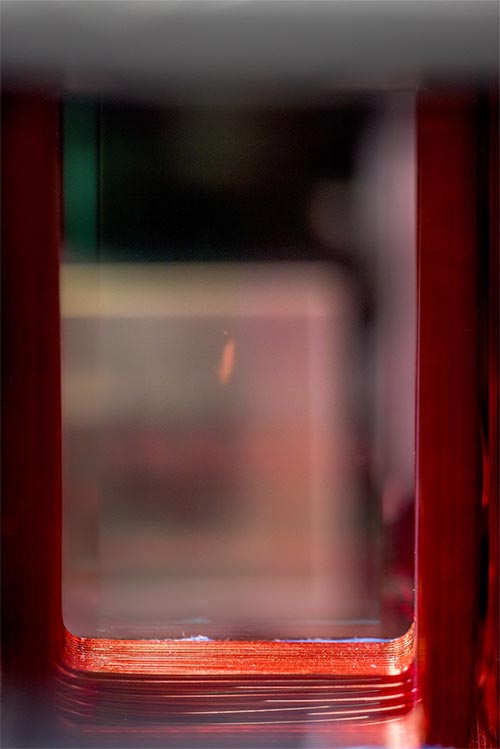Researchers have developed technology that will store information within a cloud of atoms.
Together with Infleqtion, researchers at NASA’s Glenn Research Centre have produced NASA’s first-ever quantum memory.
This technology is NASA’s first step in creating a large-scale quantum network, which could lead to more secure space communications and, eventually, new scientific discoveries.
Quantum memory stores information encoded in matter or on photons — which are single particles of light — for a certain amount of time. The memory developed in partnership with Glenn stores information in a cloud of laser-cooled atoms and later releases it as photons.
On Earth, many quantum networks use fiber optic infrastructure. However, quantum information degrades after just a few dozen miles, greatly limiting the size of any future network.
Quantum memory will help enable the expansion of quantum networks to send information over longer distances.
Credit: NASA/Steve Logan
“If we’re able to put quantum memory into space, then we could use free space transmission and further those distances to spanning the country,” says Dr.Adam Fallon, quantum scientist at NASA Glenn.
A large-scale quantum network would process information faster, provide better information security, and improve the accuracy of how we explore the world compared to a traditional computer network.
“So quantum may provide NASA the ability to explore or sense things in space that we could not do otherwise classically,” says Evan Katz, quantum scientist at NASA Glenn. “While quantum networks are a little further down the road, in the here-and-now, we are excited to have received this memory through an SBIR effort with Infleqtion so that we can understand more about how quantum memory impacts quantum networks.”

A cloud of rubidium atoms is illuminated by a red laser. Quantum memory stores information that is encoded in matter or on photons for a certain amount of time.
Credit: NASA/Jef Janis
Glenn’s quantum team intends to study and refine the new technology and then plug what they’ve learned into models to simulate how it would work in a large-scale quantum network. From there, they plan to provide feedback to NASA, academia, and industry so all parties can come closer to their goal of developing a quantum network.
Infleqtion created the quantum memory through the NASA Small Business Innovation Research/Small Business Technology Transfer (SBIR/STTR) Program, which provides funding for research, development, and demonstration of innovative technologies that fulfill the needs of NASA and the commercial marketplace.
Article credit: Jacqueline Minerd
